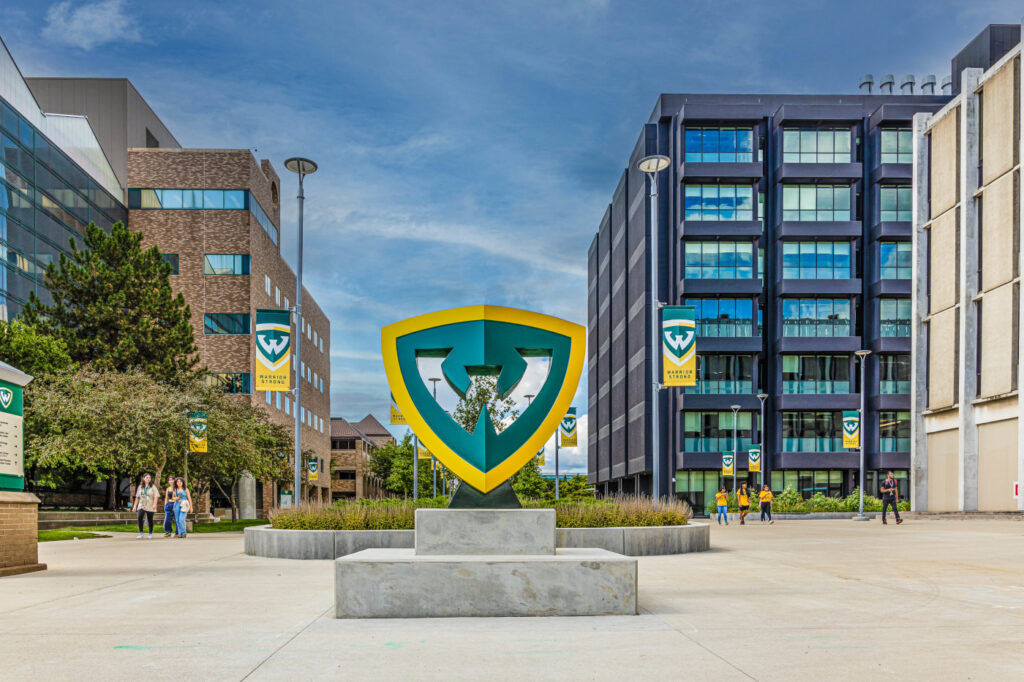Customer Profile
The University of New Mexico is a higher education institution in Albuquerque, New Mexico that serves approximately 22,000 students each year. Recognized by the Carnegie Foundation as an R1 research institution, UNM offers undergraduate, graduate and doctoral degrees. Though based in Albuquerque, the school also has four branch campuses, an online program, and multiple continuing education programs. The school was founded in 1889 and grew rapidly through the early 1900s. The urban campus now covers over 600 acres.
Download the University of New Mexico case study in PDF.
Challenges
All of UNM’s branch campuses share one central workflow for purchasing, which includes routing through the finance department located on the main campus. This caused significant problems back in the days of manual, on-paper requisitions and purchase orders, as paperwork would have to travel over a hundred miles between campuses.
As a result, UNM was a very early adopter of digital procurement tools. The university had developed an in-house solution for procurement and accounts payable, handling the day to day functions of downstream processes. The system included a FoxPro database of suppliers and items, which had to be manually updated as new goods were added to or removed from the catalog. By the mid-2000s, the system was reaching a breaking point.
Amie Ortiz, project manager and site administrator for the university’s source to pay systems, described the difficulties the team faced with the home-grown platform. “It cost us a lot of money to keep that maintained,” she said. “We definitely had security concerns, and FoxPro can only scale so much.” Security and scalability were certainly among the top concerns, but they were by no means the only worries. As other platforms continued to evolve, the homegrown system was left behind, which fractured many of the system’s integrations. The interface began to look dated and was no longer easy for users to adopt.
All these factors aside, the school was looking to gain better control over the upstream processes, especially sourcing. The self-built platform also lacked the ability to manage contracts efficiently, something that the team valued highly. In 2004, they decided it was time for a change.
The Solution
The University of New Mexico turned to JAGGAER. They went live with JAGGAER’s eProcurement solution in 2004 and Sourcing in 2006, which were integrated with Ellucian’s Banner, a leading Enterprise Resource Planning system for higher education.
Following the success of the sourcing and procurement tools, the school looked to strengthen their partnership with JAGGAER and expand their platform capabilities. In 2010, they launched Contracts+, which manages existing and new supplier contracts in one central repository, while tracking compliance from both vendors and buyers. A key element for UNM was that they could use the module for both procurement and non-procurement contracts.
Thanks to detailed privacy and security controls, they were able to use the repository for agreements with temporary workers, affiliates and partners or other necessary documents like NDAs. “Because it’s so easy,” said Ortiz “it’s allowed us to roll it out to lots of different groups on campus and they’re willing to use it – they enjoy using it.” The central repository improves visibility for the finance team, something Ortiz was particularly concerned about under the previous system.
Despite being on the cutting edge of many technologies, including integration with Banner, the UNM team chose a different path for Invoicing. This time, they opted to wait and see how other schools were approaching it, then learn best practices from those experiences. The result was a smooth implementation in 2015. “The implementation experience was very positive. Our JAGGAER project team was excellent,” Ortiz noted before jumping into the benefits they’ve seen. Since launching the Invoicing module, the team has pushed even further to a completely paperless workflow. Due to their paperless processes, the transition to remote work during the COVID-19 pandemic in March of 2020 was seamless, and the team experienced no disruptions in service. Not only is paperless more convenient, but Ortiz notes that it has also decreased cycle times.
Perhaps the biggest piece of the puzzle for the University of New Mexico was managing their research facilities, including the highly regulated chemicals and reagents they often purchased. For this, they turned to Research Material Management, again replacing a homegrown system. The tool allows the university to track chemicals from purchase through use, including monitoring stock room levels, to ensure compliance with DHS and EHS standards.
For UNM, Ortiz explains, the primary users of the system are members of the safety team. “They’re going out and conducting inventories, loading them into RMM to allow labs to then manage their inventory and create new orders.”
In the fall of 2019, the university onboarded the stockroom module as well, which allows researchers to quickly check stock levels and order from inventory rather than purchasing new chemicals from suppliers. When the chemistry stockroom was transitioned to the system, the results were immediate. “By moving to RMM, we now have the integration with eProcurement,” Ortiz explained, “so folks have the opportunity to buy on campus. We’ve seen business at the stock room actually go up.”
For the university, RMM has been something of a revelation. The flexibility has been particularly important, especially with multiple departments now using the platform. As Ortiz explained, “One of the things that our researchers like the most about RMM is that the security is so highly configurable. If one lab wants to share, their inventory can be viewable to others. If another wants to keep that private, they can absolutely do that.”
Overall, the ease of use of the JAGGAER platform has been key to UNM’s success. An easily understood user interface has helped onboard new users and transition existing employees to the fully paperless workflow. The result is a happier staff and better visibility for the procurement and finance teams.
Bottom-Line Results
- No disruptions during COVID-19 pandemic
- Reduced cycle times by going completely paperless
- Increased purchasing from stockrooms via the eProcurement module
- Centralized contracts – procurement agreements and non-procurement agreements – in one single accessible repository

The Future
With all the successes that the University of New Mexico has had, what’s next? First, according to Ortiz, is developing a more robust process for spend categorization and analytics. The amount of data flowing through the JAGGAER platform offers a wealth of opportunities, so she wants to make sure that her team is leveraging that. In particular, she wants to use some of this information to identify strategic opportunities and focus on specific agreements. Part of this process will also include reducing the school’s supplier list, which will help to condense spend and improve negotiating power. In addition, UNM’s safety group has recommended moving all chemical purchasing into RMM. The team is excited to use RMM for both inventory and purchasing.
The university is also excited about automation and emerging technologies in their digital platforms. In particular, Ortiz notes that chat bots are top of mind. While they have yet another home-grown solution to handle basic chat functions, it lacks some of the deep integration and functionality of the JAGGAER Smart Assistant. The team is also interested in adopting machine learning functionality, especially in the form of predictive analytics and automatic generation of RFQs.
The future is bright for the University of New Mexico. With a solid digital foothold already established, the continued growth with next-generation technologies will only continue to improve the school’s processes and results.




